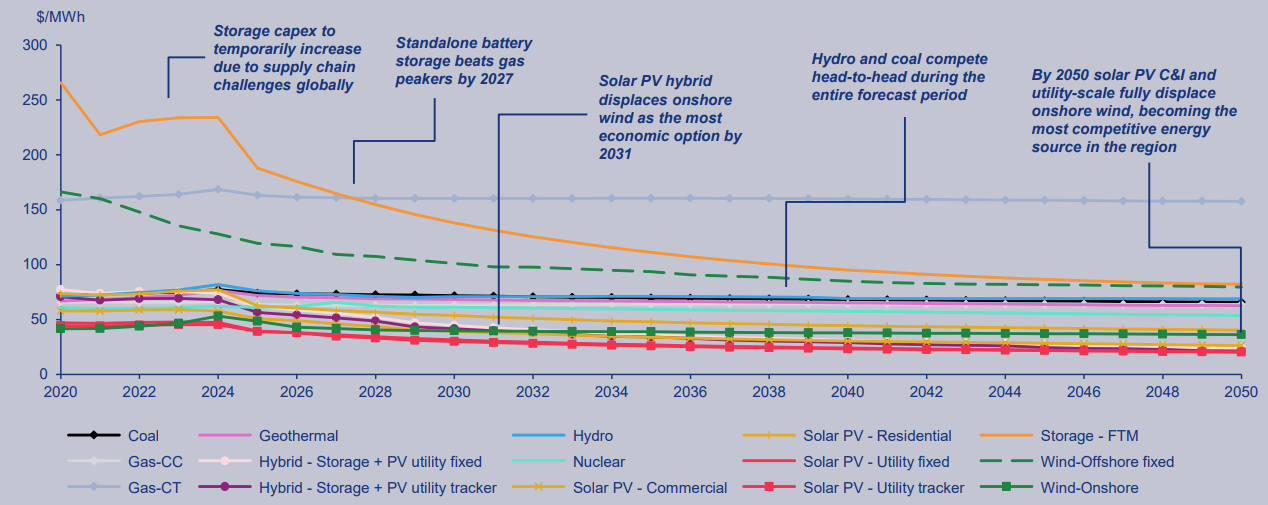Wood Mackenzie, a Verisk business (Nasdaq: VRSK), forecasts that solar will remain the lowest cost of energy of all technologies in Latin America until 2050, with US$14 per megawatt hour (MWh).
Leila Garcia da Fonseca, Research Manager – Latin America Power & Renewables at Wood Mackenzie, said: “Power demand in Latin America is set to almost double by 2040 compared to 2021 levels – a higher growth rate than North America. Yet, despite the region already being a frontrunner for renewable power generation, questions remain about how Latin America will contribute to the global energy transition effort.”
“Our LOCE analysis reveals which technologies will be competitive up to 2050 in Latin America, helping clients get an understanding of how countries in the region are supporting global decarbonisation,” Garcia da Fonseca continued.
Average LCOE in Latin America, 2020-2050 (US$/MWh)

(Source: Wood Mackenzie: GAPS Southern Cone and Mexico)
Wood Mackenzie’s latest report shows that exceptionally high capacity factors in Mexico will allow its solar market to achieve the lowest LCOE among all countries in the outlook, followed by Chile.
Garcia da Fonseca added: “Expected solar cost reductions are significant, with average capital investment falling by 55% from 2022 to 2050. This is mainly led by technology improvements, such as bifacial modules becoming the norm across the region in the mid-term.”
Offshore wind will be the most competitive in Brazil and Colombia, offering the two lowest LCOEs in the region, with US$ 79.7/MWh and US$ 57.3/MWh respectively by 2035. On-site electrolyzers preclude the need for transmission investment, which translates to an additional 13% in offshore wind LCOE reduction. However, offshore wind costs will drop 46% in the region and will not reach grid parity with other renewable technologies.
“For onshore wind, current supply chain challenges and high inflation will cause a sharp increase in costs by 2024, followed by a slow recovery. Onshore wind LOCE in Latin America already falls below Combined Cycle Gas Turbines (CCGT), except for Argentina,” Garcia da Fonseca said.
After 2033, onshore wind remains cheaper than gas in all countries across the region until 2050.
Off-grid applications for green hydrogen production is currently the main driver for offshore projects in Latin America, with the first projects expected to be online as early as 2032.
Standalone storage has the highest cost reduction rate among all technologies, averaging 64% across countries in the region. The rapid cost reduction of solar and standalone energy storage will result in extremely attractive LCOE levels for hybrid projects in the region, with US$ 21.4/MWh anticipated by 2050.
“We expect the attractiveness of conventional sources to lessen over time as ESG mandates grow. With limited opportunity for innovation, prospects for significant cost reductions for hydro and thermal plants are null. Increasing regulatory and environmental barriers will also make such projects less financeable and therefore more expensive,” Garcia da Fonseca concluded.